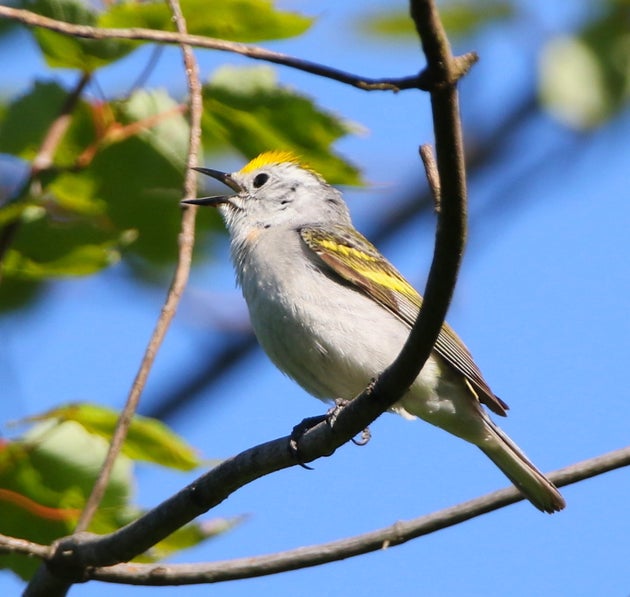Hilary Hanson: Scientists Discover Adorable Bird That's Actually 3 Species In One
A striking yellow, black and white bird spotted in Pennsylvania is actually a
hybrid between three different species, according to a news release from the Cornell Lab of
Ornithology. Extremely observant
bird watcher Lowell Burket saw the male bird in the borough of Roaring Spring
in May. He noticed that the bird had the physical attributes of the blue-winged
warbler and golden-winged warbler, but sang like a third species, the
chestnut-sided warbler.

LOWELL BURKET
The bird piqued his interest enough that after taking
photos and video, he contacted the Fuller Evolutionary Biology Lab at Cornell. “I tried to make the
email sound somewhat intellectual so they wouldn’t think I was a crackpot,” he
said in the release. Luckily, the lab did
not think Burket was a crackpot, and researcher David Toews soon got in touch
with him. Together, they found the bird again and took a blood sample and
measurements for ID purposes.
As it turned out,
Burket’s suspicion was right. DNA analysis showed that the bird’s mother was a
hybrid between golden-winged warbler and a blue-winged warbler, while the
father was a chestnut-sided warbler. The results of the analysis were published this week in the science journal Biology Letters. The paper notes that
the mix is especially significant because the bird’s mother and father weren’t
just different species, but also different genera. Golden- and blue-winged
warblers are both part of the Vermivora genus, while chestnut-sided warblers are
part of the Setophaga genus.
Researchers suspect
this three-way hybridization ultimately happened in part because of declining
numbers in the local population of golden-winged warblers, leaving females with
fewer potential mates. In response, they may be “making the best of a bad
situation” by selecting mates outside of their own species and genus,
researchers wrote. As for the rare new
hybrid, he’s hopefully enjoying some warmer weather at the moment. “The bird was released
with a [United States Geological Survey] aluminum band and was seen on the
property until about late August, after which it wasn’t seen again,” Toews told
HuffPost in an email. “Presumably it migrated south for the winter!”
